What Are Risk Assessments and Factors in Construction?
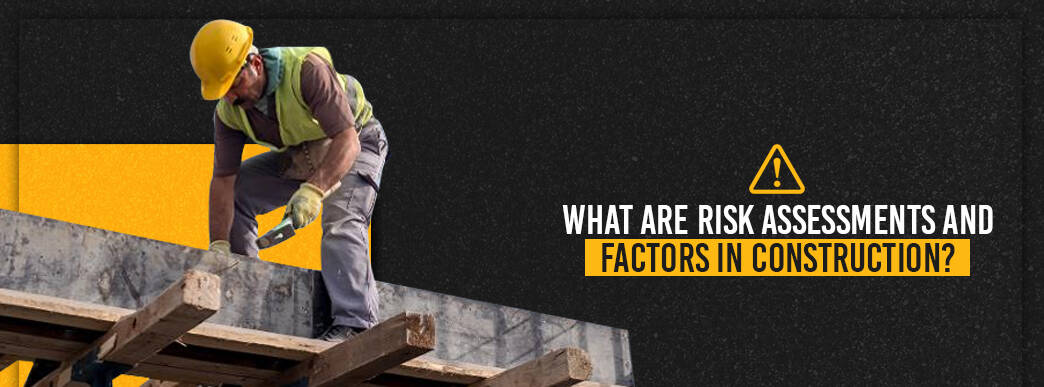
You have the right to expect your workplace to be safe and that you’ll be able to get through the workday without a severe injury or a significant accident. The same is true for nearly 7.5 million people who work in construction in the U.S.
Construction sites tend to be considerably different from other workplaces, such as offices or retail locations. They have a unique set of risks, which other industries might not even have to consider. The injury rate also happens to be higher in the construction industry compared to any other industry. In 2017, more than three out of every 100 workers in construction had an injury or illness, and more than 1,000 workers died.
Although it is impossible to entirely eliminate the risk of injury or death in any industry and from any job site, there are steps facility managers, building managers and commercial property managers can take to reduce any risk significantly. Performing a risk assessment before the start of any project, both while the project is ongoing and at the end, will help managers identify potential risks and develop a plan to mitigate or reduce those risks. A risk assessment helps managers determine how significant or severe a potential risk might be. It also helps managers avoid risks that can lead to financial harm.
Contact us today for a risk assessment and to start your next job. We identify and mitigate hazards and put protective measures, including signage and personal protective equipment, into place before we begin any job.
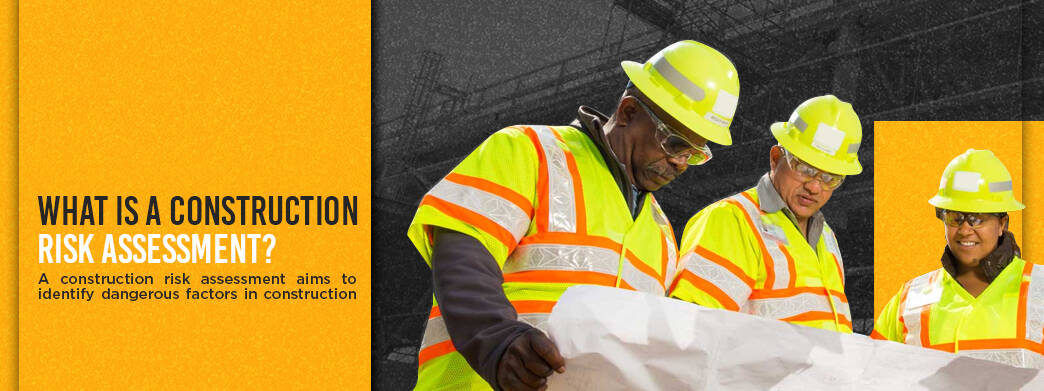
What Is a Construction Risk Assessment?
A construction risk assessment aims to identify dangerous factors in construction projects. Before discussing how and when a risk assessment is performed, it helps to define what a risk is. A risk is a chance that a hazard will cause someone injury, illness, harm or other damage.
Usually, risk assessment is a three-part process that involves:
- Identifying hazards
- Analyzing and evaluating risk
- Controlling the risk
While one of the goals of a risk assessment is the prevention of injuries, there are additional reasons to perform an assessment. A risk assessment allows you to:
- Determine who is at risk, such as employees or site visitors
- Raise awareness of the risk and any hazards
- Determine if existing measures are adequate for controlling the risk or if you need to take further action
- Decide if you need a particular control program for a hazard
- Fulfill any legal requirements, if applicable
When performing a risk assessment, it’s likely you’ll need to answer a series of questions. Finding an answer to your questions can help determine the best way to control specific liabilities and minimize hazards. A few of the things to ask as you perform the risk assessment are:
- What could happen?
- What circumstances need to exist for the hazard to be present?
- What are the consequences of doing nothing to correct the hazard?
- What is the likelihood of the consequences occurring?
- What can you do to control the risk?
- Are you effectively controlling the risk or do you need to take further action?
At Houck, we put safety first. It’s in our slogan: “Safety. Quality. Performance.” Get in touch with us for a risk assessment before starting your next project.
| Contact Us | Call Us |
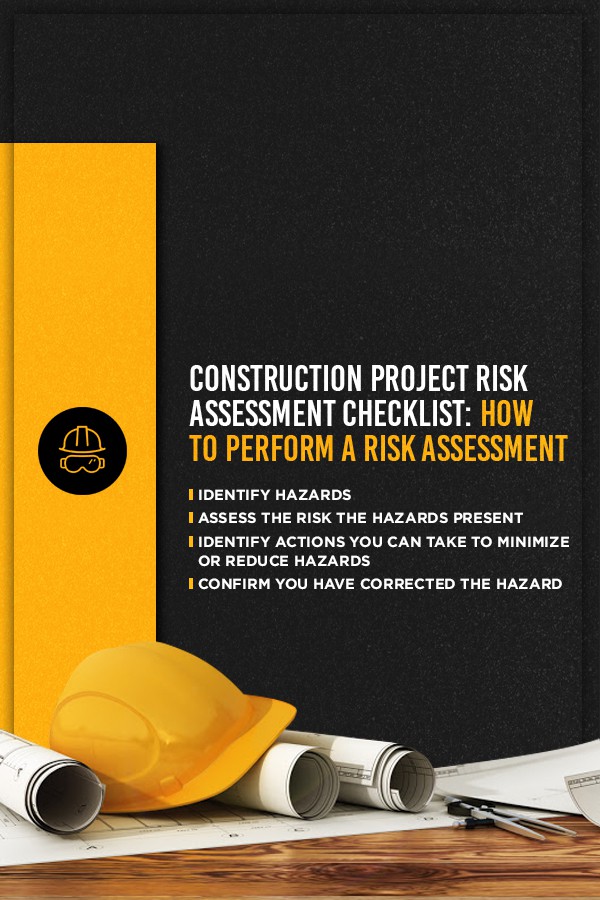
When to Perform Risk Assessment
There are multiple points during a construction project when it is appropriate to perform a risk assessment. The first point is before the project begins or during the design phase of the project. The second point is any time you introduce a new method or process to the project. For example, if your team brings a new piece of equipment on-site, it is a good idea to perform a risk assessment of the equipment to determine if it could cause injury or other issues.
Finally, another reason to perform a risk assessment is the identification of a hazard. This liability might be one your team missed during the initial assessments or one that arose unexpectedly. For example, there might be a thunderstorm that creates slippery conditions on the site. A risk assessment after a storm will analyze and evaluate how much of a threat the wet conditions pose to workers and others.
Types of Risk Assessment
Three types of risk assessment exist. Each type has a somewhat different aim and purpose, but each one might apply to a construction project.
Baseline Risk Assessment
A baseline risk assessment establishes a benchmark of the potential hazards that exist during a construction project. The goal of a baseline risk assessment is to identify the risks present, to rank each liability, and evaluate whether or not established control systems will effectively manage them.
Baseline risk assessments tend to be comprehensive and focus on any and all dangers that might be present during a project. After performing a baseline risk assessment, a manager can focus more closely on particular hazards or issues described in the assessment.
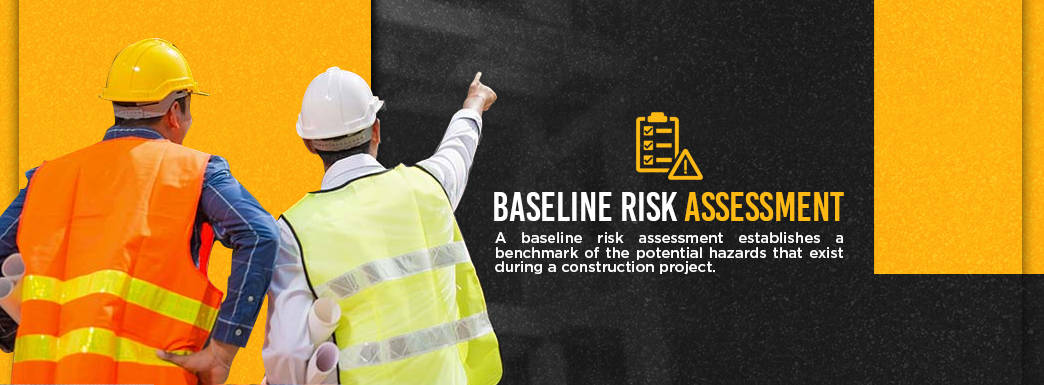
Issues-Based Risk Assessment
An issues-based risk assessment identifies risks associated with a particular activity or task, rather than risks that affect a construction project as a whole. Often, an issues-based risk assessment gets performed after a baseline risk assessment, in response to the risks identified by the baseline assessment.
An issues-based risk assessment is an appropriate option when bringing new equipment onto a job site, when new information becomes available about a particular hazard or when an employee points out a problem that could pose a risk to their safety or the safety of others on the construction site.
Continuous Risk Assessment
A continuous risk assessment is one the team performs regularly. Continuous risk assessment often involves hazard awareness, such as reminding employees to keep alert for and to report any issues or concerns on the job site. It can also involve the use of checklists before any work begins for the day or before a person begins using a piece of equipment to make sure there are no hazards or concerns present. An inspection, either by a manager or by a third party, is an example of a continuous risk assessment.
We identify and mitigate hazards and put protective measures, including signage and personal protective equipment, into place before we begin any job. Get in touch with us before starting your next project for a thorough risk assessment.
| Contact Us | Call Us |
Construction Project Risk Assessment Checklist: How to Perform a Risk Assessment
Ideally, the person who performs a risk assessment at a construction site will be someone who is familiar with the project, with construction in general and who has a good idea of the issues at hand. The risk assessment process typically involves four steps.
1. Identify Hazards
You want to classify any hazards that might be present on the job site or that might arise during a project. One way to go about identifying hazards and the risks connected to them is to think of specific tasks that will be part of the project. From there, you can assess any dangers that could come up and what the risks connected to them might be. When looking for these liabilities, remember to:
- Keep the big picture in mind.
- Refer to accident reports from past projects for an idea of hazards that were a concern previously.
- Account for anyone who might be present at the construction site, including visitors such as clients and delivery drivers.
- Take unusual conditions, such as a severe storm or power outage, under consideration.
- Examine equipment to see if altering it could change its safety features.
- Consider different groups of employees, as risk level can vary based on experience or overall health.
2. Assess the Risk the Hazards Present
The next step is to determine the severity of the risk a hazard creates. You want to evaluate not only how likely a particular hazard is to cause harm, but how bad the harm could be. When analyzing risk, consider dangers that are present under normal, day-to-day circumstances, as well as during unusual periods, such as when there’s severe weather, an emergency or a power outage.
To get a sense of the potential risk presented, review any information available, such as the operator’s manual for equipment, safety data sheets, inspection reports, test results, accident reports and studies from reputable third parties.
When ranking risks, you can evaluate the severity of the risk as well as the probability of it. For example, the severity ranking of a risk can range from low to high. A low risk might be one that results in a minor injury, such as a cut or bruise. A high risk might be one that causes a fracture, fatality or the loss of a significant amount of blood.
A highly probable risk might be one that is likely to occur at least once a year, while a less probable risk is one that is likely to occur just once during a lifetime.
3. Identify Actions You Can Take to Minimize or Reduce Hazards
Generally speaking, there are several actions you can take to minimize the risk particular hazards present. One option is to eliminate the risk by removing the danger. For example, you can send employees home if wet weather makes the construction site slippery, increasing the chance of falls.
Another option is to introduce controls that will either eliminate a hazard or reduce it enough that it no longer presents a significant risk. For example, if one piece of equipment is particularly hazardous, you might replace it with a safer one, such as a newer, more reliable model. You might make administrative changes to the work site, so workers only work between certain hours such as when there is still daylight, or you might introduce a buddy system, so no employee ever works alone.
4. Confirm You Have Corrected the Hazard
The final step in risk assessment is to verify your team has corrected the hazard, either by eliminating or minimizing it. After that, it’s essential to continue to monitor the situation to ensure any risks remain minimized and to confirm additional ones haven’t come up.
Contact us today for a risk assessment and to start your next job. We identify and mitigate hazards and put protective measures, including signage and personal protective equipment, into place before we begin any job.
| Contact Us | Call Us |
Common Risk Factors in Construction Projects
Although it’s common to associate risks and hazards with issues that cause physical harm, the scope is somewhat broader than that. During a construction project, risks can also include any problems that cause the project to go over budget or that interfere with the ability to complete the project on schedule. Common risk factors any manager should be aware of include the following.
- Occupational risks: Occupational risks include behaviors or equipment that can lead to injuries, such as a distracted employee or faulty equipment.
- Project risks: Project risks include a lack of project management, which can make a project take longer than planned or put workers at risk for injury due to poor supervision.
- Contractual risks: Contractual risks include missing deadlines, which can negatively affect the relationship between the management of a building and the construction company.
- Financial risks: Financial risks associated with construction projects can include an increase in the cost of materials and equipment.
- Natural risks: Natural risks include severe storms and other extreme weather events that might cause a construction site to shut down for one or more days.
Site-Specific Risk Assessment Examples
When performing a construction risk assessment, it is crucial to make sure that the assessment is site-specific, meaning it is project-specific and considers the conditions of the site and the requirements of a particular project. To understand how a site-specific risk assessment works and what one might look like, it can be helpful to look at specific examples.
In one instance, the owner of a building hired a manager to perform a risk assessment for the maintenance of the building. As part of the inspection, the manager walked around the building, reviewed accident reports and talked to the people who would be performing the maintenance work. They then noted who the hazards would affect, what controls were currently in place and whether those controls were sufficient.
In another case, a bricklaying company performed a risk assessment after winning a contract. The goal of the evaluation was to demonstrate the company’s approach to health and safety. As part of it, the manager of the company discussed work practices and hazards with employees, reviewed data sheets for mortar and read the manufacturer’s instructions for equipment and tools. Next, the manager recorded current controls in place for specific hazards and determined who was responsible for further actions.
Four Safety Precautions During Maintenance Work
Risk assessment isn’t only vital during construction projects to create a building. It’s also essential for any maintenance of an established building. When performing maintenance on a building, keeping the following in mind will help ensure your project is a safe one.
- Encourage communication: The employees working on a maintenance project can be excellent resources when it comes to detecting any concerns. Encourage people working on a site to speak up if they notice anything is amiss or if something feels off.
- Choose appropriate controls: Risk and hazard control should include elimination or substitution to minimize the risk, encouraging safe work practices, making administrative changes and issuing protective gear as needed to employees.
- Have a plan for non-routine operations: Along with having a plan for controlling day-to-day risks, it’s crucial to have a strategy in place should an unusual circumstance, such as a hurricane, a thunderstorm or a fire, which can create a unique set of hazards for a maintenance project.
- Check in regularly: As with risk assessment for a construction project, it’s a good idea to check in on the hazards and risks that can arise during a maintenance project.
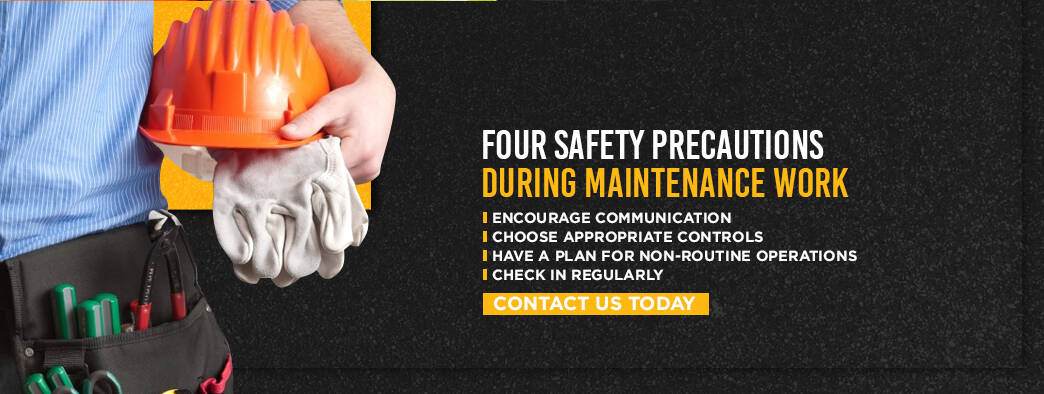
The goal of any building or construction manager should be to protect the employees and craftspeople who are working on a construction site or performing a maintenance project. Performing a risk assessment before any project begins is one way to lower the risk of injury. Risk assessment can also protect the project itself by making sure it stays on deadline and on budget.
Houck puts safety first. That’s why we’ve made it the first part of our slogan: “Safety. Quality. Performance.” Before we begin any job, we identify and mitigate hazards and put protective measures, including signage and personal protective equipment, into place. Contact us today to learn more about the construction industry, our services or about available careers at Houck.